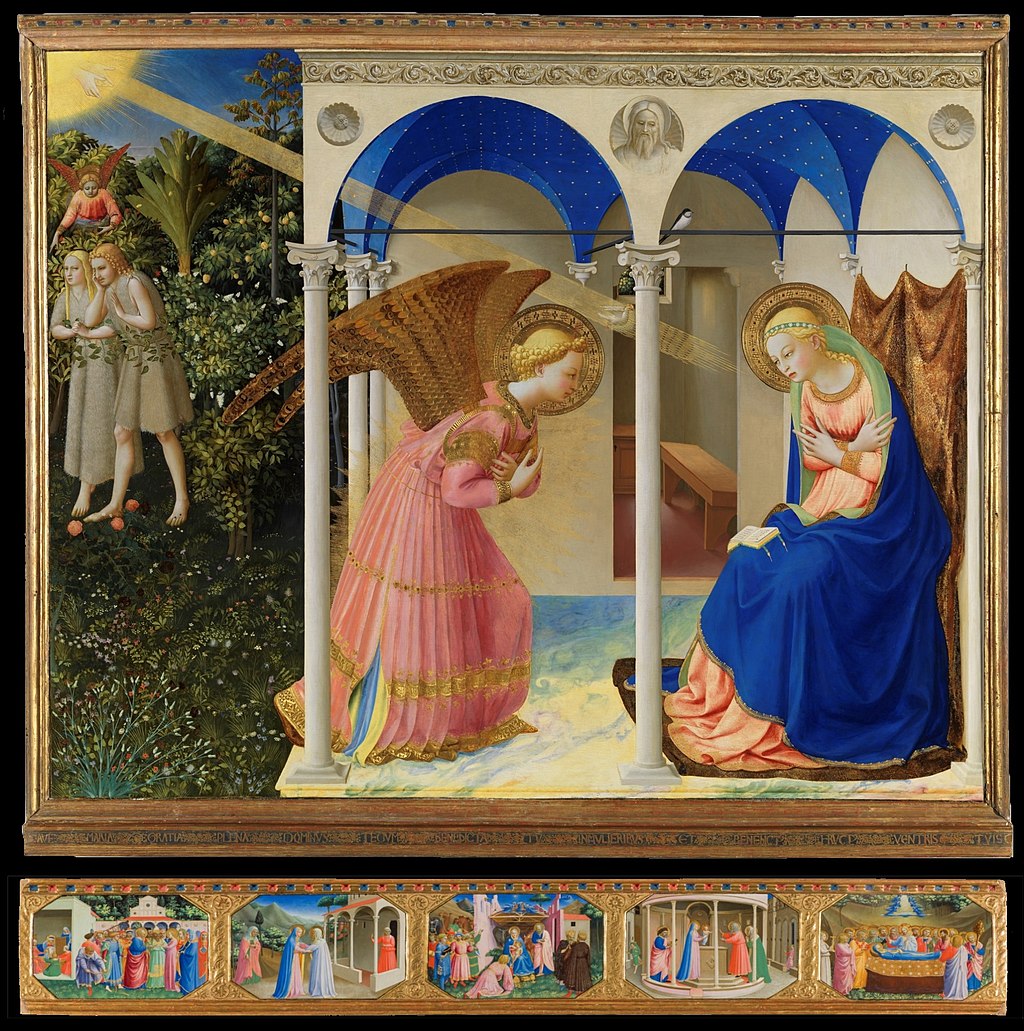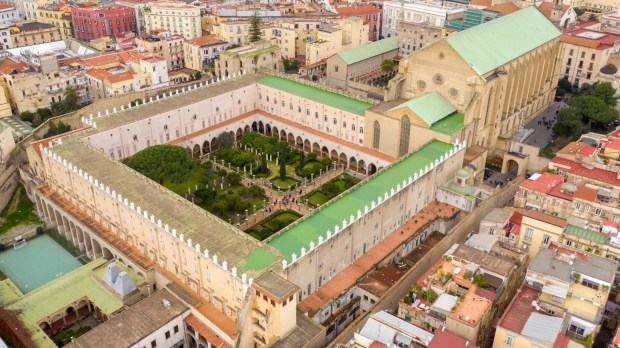The concept of Hortus Conclusus (Latin for “enclosed garden”) is a central symbolic element within Catholic theology, spirituality, and aesthetics, related to both the cloistered life, the dogma of the Incarnation, and the life of Mary.
In the context of the cloister, the notion of the Hortus Conclusus is commonly associated with the everyday life of the enclosed religious communities – namely, convents, abbeys, and monasteries. These institutions serve, to begin with, as metaphorical gardens where spiritual life is carefully cultivated, separatedfrom the secular world. The enclosure itself works as a somehow secluded area where the seeds of truth are sown so that virtue flourishes. In more ways than one, cloistered contemplative life imitates that of Mary: monks and nuns dedicate themselves to God with undivided loyalty, following Mary’s unwavering fiat, and her commitment to her unique, exceptional divine calling. Most depictions of the Annunciation (think of Fra’ Angelico’s) take place, not surprisingly, in enclosed gardens.
It can already be seen how the Hortus Conclusus is intrinsically tied to the image of the Virgin Mary. In Catholic tradition, Mary herself is often referred to as the archetypal Hortus Conclusus, emphasizing both her virginity and fertility. This honorific title signifies her unique role as Theotokos, the virginal mother of God, pointing to the enclosed garden of her virginal womb and the fertile, flourishing source of divine life in the Incarnation of God. Obviously enough, a garden implies fertility, yes, but also nurturing care, growth and, by extension, the cultivation of human and spiritual virtues. In the particular case of Mary, the hortus conclusus summarizes her role as the garden in which God’s divine seed was planted, sure, but also the flourishing of God’s grace in her life – and her nurturing care for her Son, Jesus.

The connection between virginity and fertility within the context of the Hortus Conclusus, paradoxical as it might seem at first sight for non-believers, runs deep. Mary, a perpetual virgin, is the perfect ideal of chastity and purity – an “untouched” garden. At the same time, her womb was the fertile and fruitful hortus where she miraculously conceived Jesus. This supernatural meeting of virginity and fertility reminds the believer of the transformative power of faith, and how even the most “secluded” of hearts can indeed blossom.
The Hortus Conclusus, however, also underscores the idea of protection. Monasteries and other conventual institutions protect, preserve, and nurture spiritual traditions that otherwise might have been lost. Just as the cloister offers shelter and isolation from the world, Mary’s womb offered protection and nurturance to the Son of God. It highlights the importance of maintaining these sacred spaces and the nurturing of faith in “protected” environments – so that its fruits can be, in time, shared with everyone.




